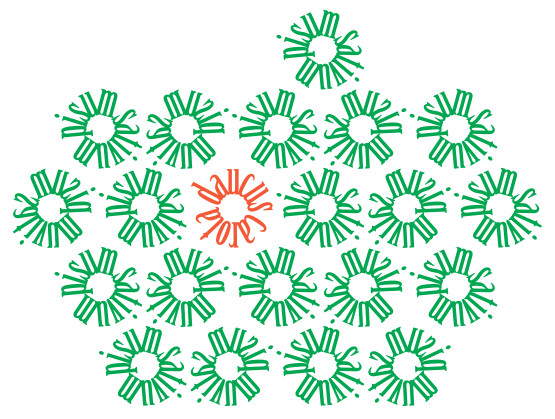Pisum sativum (pea)
Fabaceae (bean family)
Annual vine, up to one meter in height and stem of up to two meters in length; pinnate leaves, with tendrilled; white, pale violet or purple flowers. Green, yellow, brownish or black seeds, in pods. Seed dispersal mainly by humans.
It is cultivated in temperate climates worldwide in many varieties (field peas, marrowfat peas, split peas, or snow peas, mangetout). Yield (2016) over 19 million tons, one third of it in Canada. Use as vegetables, cattle feed and as green manure for agricultural soils. Can bind nitrogen by symbiosis with nodule bacteria.
Native to the eastern Mediterranean, Syria and India as a wild plant. Introduction to Germany as a crop already in ancient times.
Daucus carota (wild carrot)
Apiaceae (umbelliferae plant)
Biennial rosette plant, 30–100 cm in height, its leaves several times finely pinnate. Numerous small white flowers in a double umbel, which curls nest-like when fruit is ripe. Wild form with a thin, woody taproot. Dispersal by adherence of its fruit to animal skins and clothing.
Very common wild plant, grows mainly on meadows, pastures and fallow land. Principal form of the cultivated genus (var. sativus). One of the most important vegetables in Germany. In 2017, harvest of 733,927 tons, equivalent to about 9 kg per inhabitant. The orange-red color of the roots stems from carotenes (provitamin A), which were named after this plant.
Indigenous to Germany, natural area includes parts of Europe, West Asia and North Africa. Occurs globally nowadays.
